Contents
- 1. User Manual (Statements).pdf
- 2. User Manual.pdf
User Manual (Statements).pdf

Safety and
regulatory guide
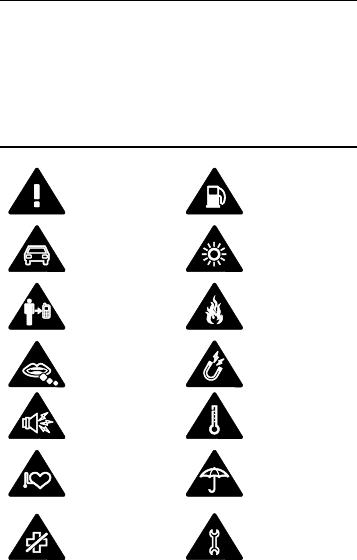
2 Safety and regulatory guide
Please read before proceeding
THE BATTERY IS NOT FULLY CHARGED WHEN YOU TAKE IT
OUT OF THE BOX.
DO NOT REMOVE THE BATTERY PACK WHEN THE PHONE IS
CHARGING.
Privacy restrictions
Some countries require full disclosure of recorded telephone
conversations,
Pictograms and graphic symbols
Read this manual’s
Safety Information
and General
Precautions.
Do not use while
re-fuelling
Do not use
hand-held while
driving
This device may
produce a bright or
flashing light
For body
-
worn
operation maintain
a separation of 1.5
cm
Do not dispose of in
a fire
Small parts may
cause a choking
hazard
Avoid contact with
magnetic media
This device may
produce a loud
sound
Avoid extreme
temperatures
Keep away
from
pacemakers and
other personal
medical devices
Avoid contact with
liquid, keep dry
Switch off when
instructed in
hospitals and
medical facilities
Do not try and
disassemble
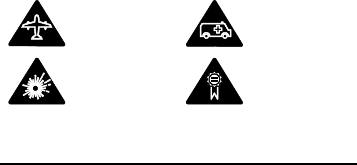
Safety and regulatory guide 3
Switch off when
instructed in aircraft
and airports
Do not rely on
this
device for
emergency
communications
Switch off in
explosive
environments
Only use approved
accessories
Important health information and safety
precautions
When using this product, the safety precautions below must be
taken to avoid possible legal liabilities and damages.
Retain and follow all product safety and operating instructions.
Observe all warnings in the operating instructions on the product.
To reduce the risk of bodily injury, electric shock, fire, and damage
to the equipment, observe the following precautions.
Electrical safety
This product is intended for use when supplied with power from
the designated battery or power supply unit. Other usage may be
dangerous and will invalidate any approval given to this product.
Safety precautions for proper grounding installation
CAUTION
: Connecting to improperly grounded equipment can
result in an electric shock to your device.
This product is equipped with a USB Cable for connecting with
desktop or notebook computer. Be sure your computer is properly
grounded (earthed) before connecting this product to the
computer. The power supply cord of a desktop or notebook
computer has an equipment-grounding conductor and a
grounding plug. The plug must be plugged into an appropriate
outlet which is properly installed and grounded in accordance with
all local codes and ordinances.
Safety precautions for power supply unit
Use the correct external power source
A product should be operated only from the type of power
source indicated on the electrical ratings label. If you are not
sure of the type of power source required, consult your
authorized service provider or local power company. For a
product that operates from battery power or other sources,
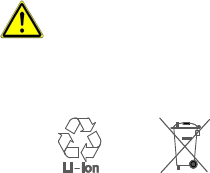
4 Safety and regulatory guide
refer to the operating instructions that are included with the
product.
This product should be operated only with the following
designated power supply unit(s).
AC adapter:
HTC, Model TC U250, TC E250, TC B250, TC A250
Handle battery packs carefully
This product contains a Lithium-ion polymer or Lithium-ion
battery. There is a risk of fire and burns if the battery pack is
handled improperly. Do not attempt to open or service the
battery pack. Do not disassemble, crush, puncture, short
external contacts or circuits, dispose of in fire or water, or
expose a battery pack to temperatures higher than 60˚C
(140˚F).
WARNING
: Danger of explosion if battery is
incorrectly replaced. To reduce risk of fire or burns,
do not disassemble, crush, puncture, short external
contacts, expose to temperature above 60° C
(140° F), or dispose of in fire or water. Replace only
with specified batteries. Recycle or dispose of used
batteries according to the local regulations or
reference guide supplied with your product.
NOTE
: This product should be operated only with the following
designated Battery Pack(s).
HTC, Model
BM65100
Take extra precautions
Keep the battery or device dry and away from water or any
liquid as it may cause a short circuit.
Keep metal objects away so they don’t come in contact with
the battery or its connectors as it may lead to short circuit
during operation.
Do not use a battery that appears damaged, deformed, or
discolored, or the one that has any rust on its casing,
overheats, or emits a foul odor.
If the battery leaks:
Do not allow the leaking fluid to come in contact with skin or
clothing. If already in contact, flush the affected area

Safety and regulatory guide 5
immediately with clean water and seek medical advice.
Do not allow the leaking fluid to come in contact with eyes. If
already in contact, DO NOT rub; rinse with clean water
immediately and seek medical advice.
Take extra precautions to keep a leaking battery away from
fire as there is a danger of ignition or explosion.
Safety precautions for direct sunlight
Keep this product away from excessive moisture and extreme
temperatures. Do not leave the product or its battery inside a
vehicle or in places where the temperature may exceed 60°C
(140°F), such as on a car dashboard, window sill, or behind a glass
that is exposed to direct sunlight or strong ultraviolet light for
extended periods of time. This may damage the product, overheat
the battery, or pose a risk to the vehicle.
Prevention of hearing loss
CAUTION
: Permanent hearing loss may occur if
earphones or headphones are used at high volume for
prolonged periods of time.
NOTE
: For France, Earphone (listed below) for this device have
been tested to comply with the Sound Pressure Level requirement
laid down in the applicable NF EN 50332-1:2000 and/or NF EN
50332-2:2003 standards as required by French Article L. 5232-1.
Earphone, manufactured by HTC, Model HS S250.
Safety in aircraft
Due to the possible interference caused by this product to an
aircraft’s navigation system and its communications network,
using this device’s phone function on board an airplane is against
the law in most countries. If you want to use this device when on
board an aircraft, remember to turn off your phone by switching to
Airplane Mode.
Environment restrictions
Do not use this product in gas stations, fuel depots, chemical
plants or where blasting operations are in progress, or in
potentially explosive atmospheres such as fuelling areas, fuel
storehouses, below deck on boats, chemical plants, fuel or
chemical transfer or storage facilities, and areas where the air
contains chemicals or particles, such as grain, dust, or metal
powders. Please be aware that sparks in such areas could cause an
6 Safety and regulatory guide
explosion or fire resulting in bodily injury or even death.
Explosive atmospheres
When in any area with a potentially explosive atmosphere or
where flammable materials exist, the product should be turned off
and the user should obey all signs and instructions. Sparks in such
areas could cause an explosion or fire resulting in bodily injury or
even death. Users are advised not to use the equipment at
refueling points such as service or gas stations, and are reminded
of the need to observe restrictions on the use of radio equipment
in fuel depots, chemical plants, or where blasting operations are in
progress. Areas with a potentially explosive atmosphere are often,
but not always, clearly marked. These include fueling areas, below
deck on boats, fuel or chemical transfer or storage facilities, and
areas where the air contains chemicals or particles, such as grain,
dust, or metal powders.
Road safety
Full attention must be given to driving at all times in order to
reduce the risk of an accident. Using a phone while driving (even
with a hands free kit) causes distraction and can lead to an
accident. You must comply with local laws and regulations
restricting the use of wireless devices while driving.
Safety precautions for RF exposure
Avoid using your phone near metal structures (for example, the
steel frame of a building).
Avoid using your phone near strong electromagnetic sources,
such as microwave ovens, sound speakers, TV and radio.
Use only original manufacturer-approved accessories, or
accessories that do not contain any metal.
Use of non-original manufacturer-approved accessories may
violate your local RF exposure guidelines and should be avoided.
Interference with medical equipment functions
This product may cause medical equipment to malfunction.
The use of this device is forbidden in most hospitals and
medical clinics.
If you use any other personal medical device, consult the
manufacturer of your device to determine if they are adequately
shielded from external RF energy. Your physician may be able to
assist you in obtaining this information.
Turn your phone OFF in health care facilities when any regulations
Safety and regulatory guide 7
posted in these areas instruct you to do so. Hospitals or health
care facilities may be using equipment that could be sensitive to
external RF energy.
Hearing aids
Some digital wireless phones may interfere with some hearing aids.
In the event of such interference, you may want to consult your
service provider, or call the customer service line to discuss
alternatives.
Electrical safety
Accessories
Use only approved accessories.
Do not connect with incompatible products or accessories.
Take care not to touch or allow metal objects, such as coins or
key rings, to contact or short-circuit the battery terminals.
Connection to a car
Seek professional advice when connecting a phone interface to
the vehicle electrical system.
Faulty and damaged products
Do not attempt to disassemble the phone or its accessory.
Only qualified personnel must service or repair the phone or
its accessory.
General precautions
You alone are responsible for how you use your phone and any
consequences of its use. You must always switch off your phone
wherever the use of a phone is prohibited. Use of your phone is
subject to safety measures designed to protect users and their
environment.
Avoid applying excessive pressure to the device
Do not apply excessive pressure on the screen and the device to
prevent damaging them and remove the device from your
pants’ pocket before sitting down. It is also recommended that
you store the device in a protective case and only use the device
stylus or your finger when interacting with the touch screen.
Cracked display screens due to improper handling are not
covered by the warranty.
Protect your phone
Always treat your phone and its accessories with care and
keep them in a clean and dust-free place.
Do not expose your phone or its accessories to open flames or
lit tobacco products.
8 Safety and regulatory guide
Do not drop, throw or try to bend your phone or its
accessories.
Do not use harsh chemicals, cleaning solvents, or aerosols to
clean the device or its accessories.
Do not paint your phone or its accessories.
Do not attempt to disassemble your phone or its accessories,
only authorised personnel must do so.
Store your phone or its accessories at temperatures between
0° C to 40° C
Please check local regulations for disposal of electronic
products.
Do not carry your phone in your back pocket as it could break
when you sit down.
Damage requiring service
Unplug the product from the electrical outlet and refer servicing
to an authorized service technician or provider under the
following conditions:
The product has been exposed to rain or liquid, dropped,
subject to impact or damaged
There are noticeable signs of overheating.
The product does not operate normally when you follow the
operating instructions.
Avoid hot areas
The product should be placed away from heat sources such as
radiators, heat registers, stoves, or other products (including
amplifiers) that produce heat.
Avoid wet areas
Never use the product in rain, or near washbasins or other wet or
high humidity locations. If your product gets wet, do not try to
dry the product with the use of an oven or dryer, as this may
damage your product.
Avoid using your device after a dramatic change in temperature
When you move your device between environments with very
different temperature and/or humidity ranges, condensation
may form on or within the device. To avoid damaging the device,
allow sufficient time for the moisture to evaporate before using
the device.
NOTICE
: When taking the device from low-temperature
conditions into a warmer environment or from high-temperature
conditions into a cooler environment, allow the device to
acclimate to room temperature before turning on power.
Avoid pushing objects into product
Never push objects of any kind into cabinet slots or other

Safety and regulatory guide 9
openings in the product. Slots and openings are provided for
ventilation. These openings must not be blocked or covered.
Adjust the volume
Turn down the volume before using headphones or other audio
devices.
Cleaning
Unplug the product from the wall outlet before cleaning. Do not
use liquid cleaners or aerosol cleaners. Use a damp cloth for
cleaning, but NEVER use water to clean the LCD screen.
Small children
Do not leave your phone and its accessories within the reach of
small children or allow them to play with it. They could hurt
themselves or others, or could accidentally damage the phone.
Your phone contains small parts with sharp edges that may
cause an injury or which could become detached and create a
choking hazard. Consult the doctor immediately if the
accessories or battery are swallowed.
Repetitive motion injuries
To minimise the risk of RSI, when Texting or playing games with
your phone:
Do not grip the phone too tightly
Press the buttons lightly
Electrostatic discharge (ESD)
Do not touch the SIM card’s metal connectors.
Emergency calls
This phone, like any wireless phone, operates using radio signals,
which cannot guarantee connection in all conditions. Therefore,
you must never rely solely on any wireless phone for emergency
communications.
Regulatory agency identifications
For regulatory identification purposes, your product is assigned a
model number of 0P4E240.
FCC ID: NM80P4E240
To ensure continued reliable and safe operation of your device,
use only the accessories listed below with your 0P4E240.
The Battery Pack has been assigned a model number of
BM65100
.
NOTE:
This product is intended for use with a certified Class 2
Limited Power Source, rated 5 Volts DC, maximum 1 Amp power
supply unit.
European Union notice
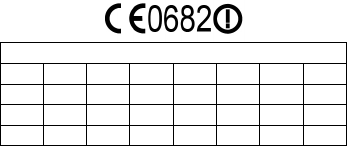
10 Safety and regulatory guide
Products with CE marking comply with the R&TTE Directive
(1999/5/EC), the EMC Directive (2004/108/EC), and the Low
Voltage Directive (2006/95/EC) issued by the Commission of the
European Community.
Compliance with these directives implies conformity to the
following European Norms (in parentheses are the equivalent
international standards).
EN 50360
EN 62311
EN 62479
EN 62209-1
EN 62209-2
EN 60950-1
EN 301 489-1
EN 301 489-3
EN 301 489-7
EN 301 489-17
EN 301 489-24
EN 301 511
EN 301 908-1
EN 301 908-2
EN 301 908-13
EN 300 328
EN 301 893
EN 300 440-1
EN 300 440-2
EN 302 291-1
EN 302 291-2
This equipment may be operated in:
AT
BE
BG
CH
CY
CZ
DE
DK
EE
ES
FI
FR
GB
GR
HU
IE
IT
IS
LI
LT
LU
LV
MT
NL
NO
PL
PT
RO
SE
SI
SK
TR
Federal Communications Commission notice
This device complies with part 15 of the FCC Rules. Operation is
subject to the following two conditions: (1) This device may not
Safety and regulatory guide 11
cause harmful interference, and (2) this device must accept any
interference received, including interference that may cause
undesired operation.
Operation on the 5.15-5.25 GHz frequency band is restricted to
indoor use only. The FCC requires indoor use for the 5.15-5.25 GHz
band to reduce the potential for harmful interference to
co-channel Mobile Satellite Systems. Therefore, it will only transmit
on the 5.25-5.35 GHz, 5.47-5.75 GHz and 5.725-5825 GHz band
when using outdoors.
This equipment has been tested and found to comply with the
limits for a Class B digital device, pursuant to Part 15 of the FCC
Rules. These limits are designed to provide reasonable protection
against harmful interference in a residential installation. This
equipment generates, uses, and can radiate radio frequency
energy and, if not installed and used in accordance with the
instructions, may cause harmful interference to radio
communications. However, there is no guarantee that interference
will not occur in a particular installation. If this equipment does
cause harmful interference to radio or TV reception, which can be
determined by turning the equipment on and off, the user is
encouraged to try to correct the interference by one or more of
the following measures:
Reorient or relocate the receiving antenna.
Increase the separation between the equipment and receiver.
Connect the equipment into an outlet on a circuit different from
that to which the receiver is connected.
Consult the dealer or an experienced radio or television
technician for help.
Modifications
The FCC requires the user to be notified that any changes or
modifications made to the device that are not expressly approved
by HTC Corporation may void the user’s authority to operate the
equipment.
FCC RF Radiation Exposure Statement
This Transmitter has been demonstrated co-location compliance
requirements with Bluetooth and WLAN.
This transmitter must not be co-located or operating in
conjunction with any other antenna or transmitter.
This equipment complies with FCC RF radiation exposure limits
set forth for an uncontrolled environment.
12 Safety and regulatory guide
SAR information
Head: 0.525 W/kg@10g (CE), 0.88 W/kg@1g (FCC)
Body: 0.525 W/kg@10g (CE), 1.27 W/kg@1g (FCC)
Body-worn Operation
This device was tested for typical body-worn operations. A
minimum separation distance must be maintained between the
user’s body and the handset, including the antenna:
1 cm to comply with the RF exposure requirements in the U.S.
1.5 cm to comply with the RF exposure requirements in Europe
Third-party belt-clips, holsters, and similar accessories used by this
device should not contain any metallic components. Body-worn
accessories that do not meet these requirements may not comply
with RF exposure requirements and should be avoided.
Use only the supplied or an approved antenna. Unauthorized
antennas, modifications, or attachments could impair call quality,
damage the phone, or result in violation of regulations. Do not use
the phone with a damaged antenna. If a damaged antenna comes
into contact with the skin, a minor burn may result. Please contact
your local dealer for replacement antenna.
Telecommunications & Internet Association (TIA) safety
information
Pacemakers
The Health Industry Manufacturers Association recommends that
a minimum separation of 15 cm (6 inches) be maintained between
a handheld wireless phone and a pacemaker to avoid potential
interference with the pacemaker. These recommendations are
consistent with the independent research by and
recommendations of Wireless Technology Research.
Persons with pacemakers:
Should ALWAYS keep the phone more than 15 cm (6 inches)
from their pacemaker when the phone is turned ON.
Should not carry the phone in a breast pocket.
Should use the ear opposite the pacemaker to minimize the
potential for interference. If you have any reason to suspect that
interference is taking place, turn the phone OFF immediately.
WEEE notice
The Directive on Waste Electrical and Electronic Equipment
(WEEE), which entered into force as European law on 13th
February 2003, resulted in a major change in the treatment of

Safety and regulatory guide 13
electrical equipment at end-of-life.
The purpose of this Directive is, as a first priority, the prevention of
WEEE, and in addition, to promote the reuse, recycling and other
forms of recovery of such wastes so as to reduce disposal.
Th
e WEEE logo (shown at the left) on the product or
on its box indicates that this product must not be
disposed of or dumped with your other household
waste. You are liable to dispose of all your electronic
or electrical waste equipment by relocating over to
the specified collection point for recycling of such
hazardous waste. Isolated collection and proper
recovery of your electronic and electrical waste
equipment at the time of disposal will allow us to help
conserving natural resources. Moreover, proper
recycling of the electronic and electrical waste
equipment will ensure safety of human health and
environment. For more information about electronic
and electrical waste equipment disposal, recovery,
and collection points, please contact your local city
center, household waste disposal service, shop from
where you purchased the equipment, or
manufacturer of the equipment.
RoHS compliance
This product is in compliance with Directive 2011/65/EU of the
European Parliament and of the Council of 8 June 2011, on the
restriction of the use of certain hazardous substances in electrical
and electronic equipment (RoHS) and its amendments.
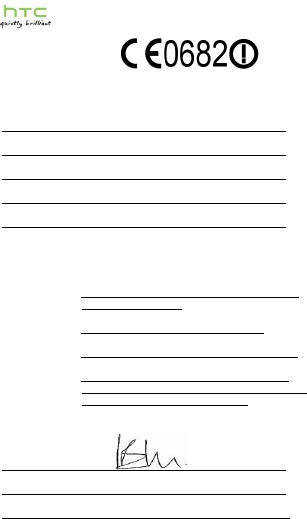
DECLARATION OF CONFORMITY
Intended for use in EU
For the following equipment:
Smartphone
(Product Description)
HTC Desire 601
(Product Marketing Name)
0P4E240
(Product Name)
HTC Corporation
(Manufacturer Name)
No.23, Xinghua Rd., Taoyuan City, Taoyuan County 330, Taiwan.
(Manufacturer Address)
is herewith confirmed to comply with the essential requirements of Article 3 of the R&TTE 1999/5/EC Directive, if used
for its intended use and that the following standards has been applied:
1. Health (Article 3.1.a of the R&TTE Dir ective)
Applied standard(s):
EN 50360: 2001 / A1: 2012 / EN 62311: 2008 / EN 62479: 2010
EN 62209-1: 2006 / -2: 2010
2. Safety (Article 3.1.a of the R&TTE Directive)
Applied standard(s):
EN 60950-1: 2006 + A11: 2009 + A1: 2010 + A12: 2011
3. Electromagnetic compatibility (Article 3.1.b of the R&TTE Directive)
Applied standard(s):
EN 301 489-1 V1.9.2 / -3 V1.4.1 / -7 V1.3.1 / -17 V2.2.1 / -24 V1.5.1
4. Efficient use of the radio frequency spectrum (Article 3.2 of the R&TTE Directive)
Applied standard(s):
EN 300 328 V1.7.1 / EN 301 893 V1.6.1 / EN 300 440-1 V1.6.1
EN 300 440-2 V1.4.1 / EN 301 908-1 V5.2.1 / -2 V5.2.1 / -13 V5.2.1
EN 301 511 V9.0.2 / EN 302 291-1 V1.1.1 / -2 V1.1.1
Person responsible for making this declaration:
Philip Blair
(Name and signature)
Product Director
(Position / Title)
United Kingdom 2013/08/13
(Place) (Date)
宏達國際電子股份有限公司
HTC Corporation
23, Xinghua Rd.,
Taoyuan 330, Taiwan
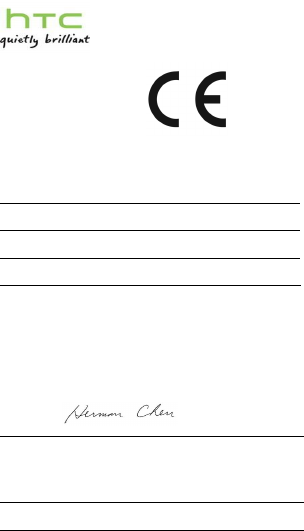
DECLARATION OF CONFORMITY
Intended for use in EU
For the following equipment:
Smartphone
(Product Description)
0P4E240
(Product Name)
HTC Corporation
(Manufacturer Name)
No.23, Xinghua Rd., Taoyuan City, Taoyuan County 330, Taiwan.
(Manufacturer Address)
is herewith confirmed to comply with the essential requirements of RoHS 2011/65/EU
Directive & its amendments.
Person responsible for making this declaration:
Herman Chen
(Name and signature)
Head of Product Safety & Environmental Department
(Position / Title)
Taiwan 2013/08/13
(Place) (Date)
宏達國際電子股份有限公司 No.23, Xinghua Rd.,
HTC Corporation Taoyuan City 330, Taiwan

16 Safety and regulatory guide
91HXXXX-XXM Rev.A
htc.com